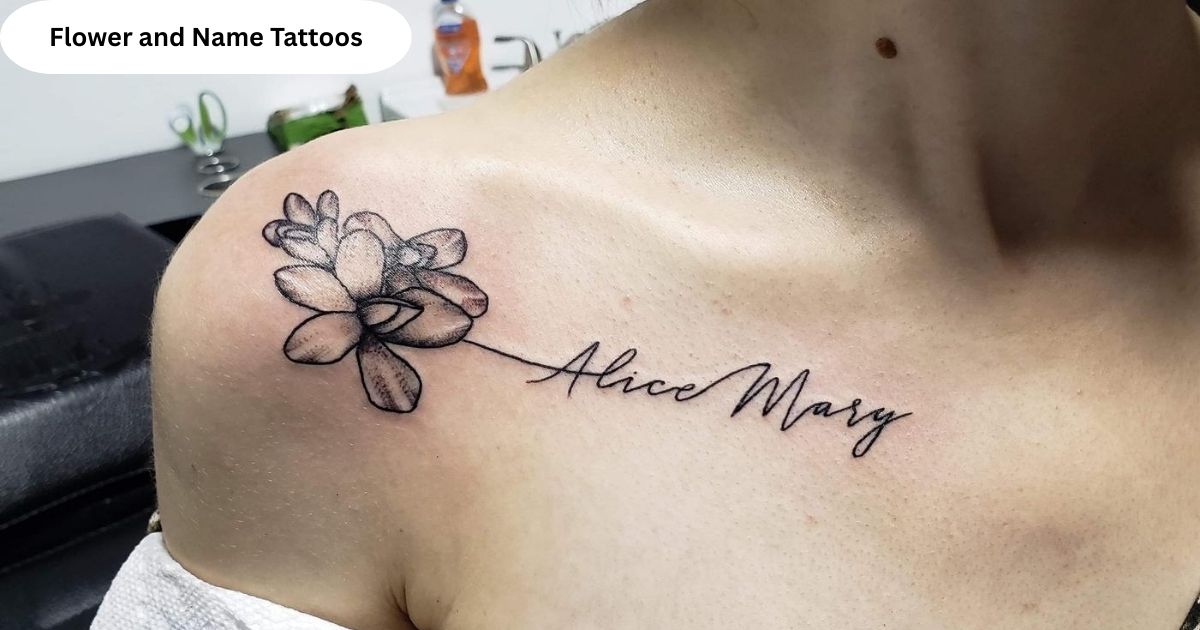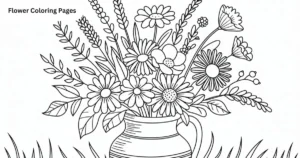Flower and name tattoos have become a popular way to express personal emotions, relationships, and memories through art. Combining the natural beauty of flowers with the emotional depth of a name creates a meaningful design that stands out and holds sentimental value.
Whether it’s to honor a loved one, celebrate a special moment, or symbolize personal growth, these tattoos offer endless possibilities. From delicate roses with elegant cursive names to bold sunflowers paired with meaningful initials, each design tells a unique story on the canvas of the skin.
Popular Flower Choices and Their Symbolism
Different flowers carry unique meanings that can enhance the depth of your tattoo. For example, roses symbolize love and passion, while lilies represent purity and renewal.
Cherry blossoms, often chosen for their delicate beauty, signify life’s fleeting moments. Picking the right flower adds a meaningful layer to the tattoo’s overall message.
Personalizing Tattoos with Names
Adding a name to a flower tattoo brings a personalized touch that resonates with emotional significance. It can honor family members, children, or someone who has passed away.
The font style, placement, and size of the name can make the design more elegant or bold. Choosing a name with sentimental value transforms the tattoo into a wearable memory.
Design Ideas for Flower and Name Tattoos
Creative combinations can make your flower and name tattoo truly unique. You can incorporate a name into the flower’s stem, petal, or even weave it around the design.
Other ideas include watercolor effects, mandala patterns, or geometric shapes to enhance the visual appeal. Artists often blend traditional and modern elements to create custom tattoos.
Placement Options and Their Impact
The placement of your tattoo can affect both its visibility and meaning. Common areas include the forearm, shoulder, collarbone, and back, depending on your style and comfort.
More intimate placements like the wrist or ribcage keep the tattoo personal and discreet. Placement also influences how detailed and large your tattoo can be.
Pain Levels and Aftercare Tips
Pain tolerance varies depending on the tattoo’s location and your sensitivity. Areas with more bone, like ribs or ankles, tend to hurt more than fleshier spots like thighs or arms.
Aftercare is crucial to prevent infection and preserve your tattoo’s quality. Keeping it clean, moisturized, and protected from the sun ensures long-lasting color and definition.
Choosing the Right Tattoo Artist
Selecting a skilled tattoo artist is key to achieving the look you want. Look for someone with experience in floral and script work, and check their portfolio beforehand.
Consult with the artist about your vision, including flower types, name style, and overall design. A good artist will guide you in choosing the best composition and placement.
Read More: Flower and Tattoo
Conclusion
In conclusion, flower and name tattoos offer a beautiful and meaningful way to express love, memory, and identity. They blend natural elegance with personal sentiment, making each design deeply unique. Whether you choose a rose for love or a lily for purity, pairing it with a name adds lasting emotional value.
From delicate wrist pieces to bold shoulder tattoos, the possibilities are endless. With the right artist, placement, and aftercare, your flower and name tattoo can become a cherished symbol of your personal journey and relationships. It’s more than body art—it’s a story etched into your skin forever.
FAQ’s
What do flower and name tattoos symbolize?
They symbolize personal memories, emotions, and connections with loved ones.
Which flowers are most popular in name tattoos?
Roses, lilies, cherry blossoms, and lotuses are commonly chosen.
Where is the best place to get a flower and name tattoo?
Popular spots include the forearm, wrist, shoulder, and collarbone.
Do flower and name tattoos hurt?
Pain levels vary by placement, with bonier areas generally hurting more.
How do I take care of my flower and name tattoo?
Keep it clean, moisturized, and protect it from direct sunlight.









